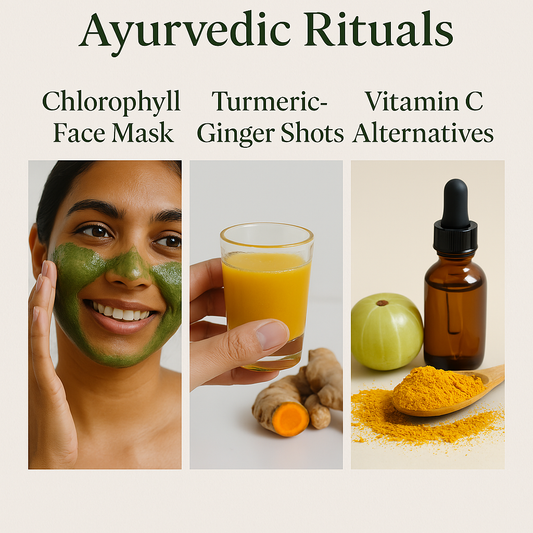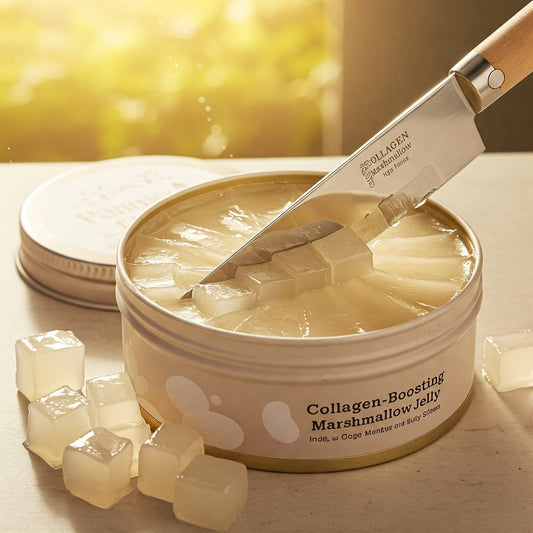If you’ve ever struggled with persistent acne, you know how exhausting the trial-and-error phase can be. I’ve spent years chasing results, from over-the-counter fixes to harsh prescriptions—but it wasn’t until I slowed down and turned my skincare into a ritual that I started to see lasting change.
What I’m about to share with you isn’t just about skin—it’s about returning to ancient wisdom, understanding your body from the inside out, and embracing rituals that promote longevity, gut health, and holistic balance. Here are the 3 habits that truly transformed my skin and my life.
1. The Chlorophyll Mask: A Green Potion for My Skin
It started as an experiment, but turned into my favorite skincare ritual. I created a simple mask using chlorophyll, besan (gram flour), and raw milk. I called it the "Shrek Mask" because the results calm, soothed, and clear skin that felt alive.
Why it works: Chlorophyll is packed with antioxidants and has anti-inflammatory properties that help reduce redness, soothe irritation, and detox the skin. Besan is a traditional Ayurvedic ingredient used to cleanse and exfoliate, while milk contains lactic acid to brighten and soften the skin. Together, this mask became my weekly skin reset.
I applied it twice a week—leaving it on for 10-12 minutes. Not only did it help with surface acne, but I noticed a visible reduction in my post-inflammatory pigmentation over time.
The liquid chlorophyll was purchased through Amazon.
2. Morning Turmeric-Ginger Shots: Gut Health Meets Glow-Up
This one was hard at first (because let’s be honest, turmeric and ginger are spicy!), but now I can’t start my day without it. Every morning, I took a small shot made from fresh turmeric root, ginger, lemon juice, and black pepper.
Why it works: Turmeric is a powerful anti-inflammatory and antioxidant. Ginger supports digestion and reduces internal inflammation. Lemon gives you a natural vitamin C boost, while black pepper enhances the bioavailability of curcumin (turmeric’s active compound).
What started as a skin hack quickly turned into a biohacking ritual that improved my digestion, boosted my energy, and significantly reduced the hormonal flare-ups I used to get around my jawline.
3. Swapping Synthetic Vitamin C for Ayurvedic Superfoods
Instead of relying on synthetic Vitamin C serums, I started using natural, Ayurvedic alternatives both topically and internally. Think Amla (Indian gooseberry), turmeric, and Aloe Vera.
Why it works: Amla is one of the richest natural sources of Vitamin C and supports collagen production and skin elasticity. Aloe Vera is a powerhouse of antioxidants, while turmeric supports both skin and gut health.
These ingredients didn’t just support my skin; they supported my whole system. I added Amla powder to my smoothies, Aloe Vera to my drinks, and made DIY masks with turmeric and honey. Within weeks, my skin looked more even, my digestion improved, and I stopped needing multivitamins—because nature was doing the job.
Final Thoughts:
Healing acne is rarely just about a product. It’s about the systems you build around your wellbeing. For me, these three rituals weren’t just treatments—they were turning points. And they became non-negotiables in my journey to clear skin and a clearer mind.
If you’re someone struggling with stubborn acne and you're tired of temporary fixes, I hope this inspires you to go deeper, go slower, and build rituals that nourish from the inside out.




1 comment
Thank you